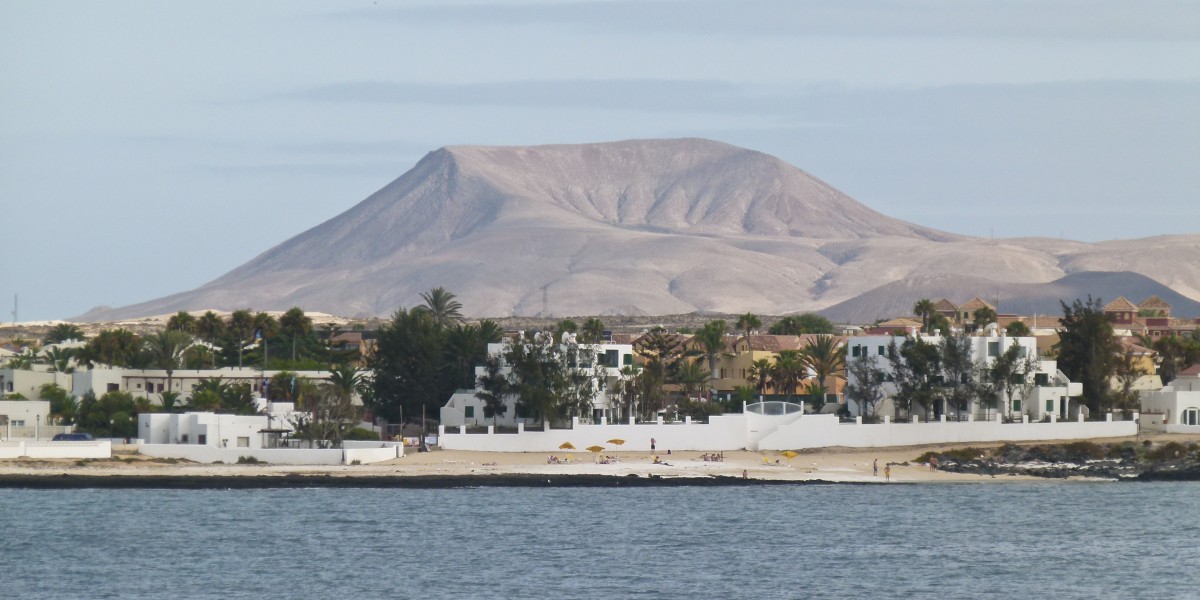
When weighing up the best places to live on the Canary Islands, picking a base comes down to vibe and microclimate as much as budget. City living is sociable and practical, the north coasts are greener and cooler, and the southern belts are sunny and resort‑heavy. Foreigners cluster around Las Canteras in Las Palmas de Gran Canaria, the Santa Cruz–La Laguna corridor, and along the south of Tenerife, Gran Canaria, Lanzarote and Fuerteventura.
Best places to live in the Canary Islands: island by island
Choosing a base in the archipelago depends on climate, connectivity and daily rhythm, with each island offering something distinct.
Tenerife is the all‑rounder: big‑island services, strong healthcare and schooling, varied microclimates, and easy switching between urban culture and wild landscapes.
Lanzarote feels design‑led and low‑rise, with lava fields, tidy whitewashed towns and a calmer pace, plus cycling routes and unique vineyards.
Fuerteventura is about wind and wide beaches, a surf and kitesurf culture, and a spread‑out feel where a car makes life simpler.
Gran Canaria blends proper city life with beach living and mountains in the middle, decent public transport, and a lively international crowd in season.
La Palma is lush and steep, made for hiking and stargazing, with a slower everyday pace and fewer tourist crowds.
La Gomera is compact and rugged, built around deep ravines and laurel forests, close‑knit communities and ferry links.
El Hierro is the quietest of the lot, sustainability‑minded, famed for diving and far from mass tourism, where planning ahead becomes second nature.
Housing prices across the Canary Islands
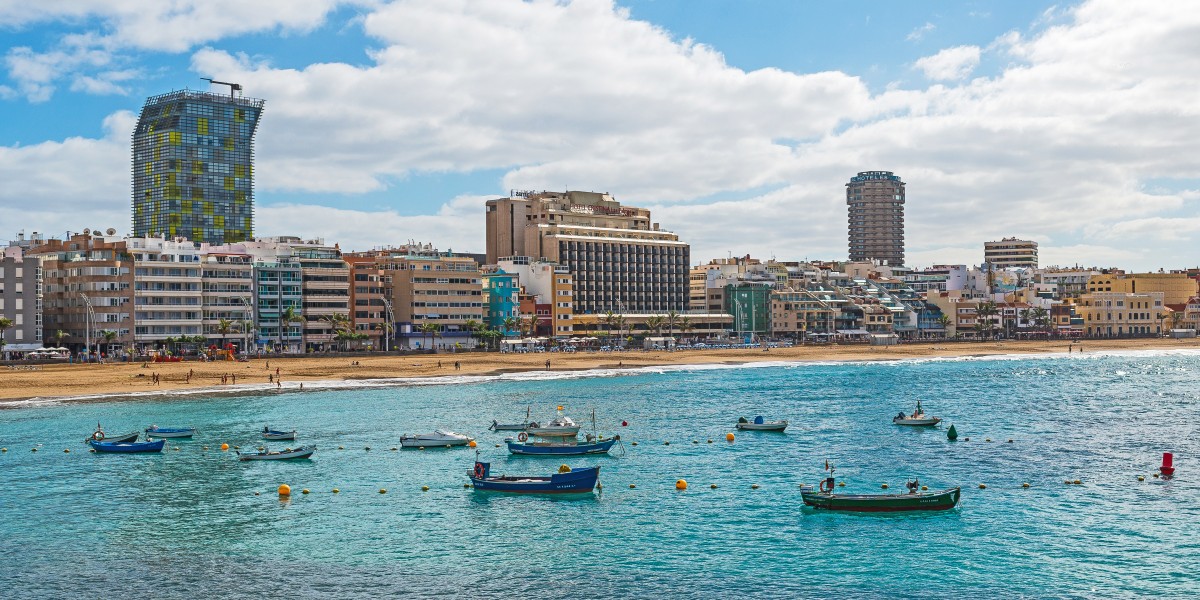
Property prices in the Canary Islands were around €3,084 per m² in September 2025, 13.4% than a year before. For rentals, rent prices in the Canary Islands averaged €15 per m² in the same month, so an 80 m² flat would typically be about €1,200 per month.
The highest purchase prices cluster in the resort hotspots, with San Bartolomé de Tirajana, Mogán, and Adeje. Better value for buyers is inland or on the greener northern slopes in places like Teror near €1,251 per m², Arafo about €1,401 per m² and Icod de los Vinos around €1,419 per m². On the rental side, Icod de los Vinos is among the most affordable at roughly €9.8 per m², whereas San Bartolomé de Tirajana is the most expensive.
Where to live on the Canary Islands
Gran Canaria: city, north, south and east
Las Palmas de Gran Canaria
Urban beach life around Las Canteras, historic quarters in Vegueta and Triana, solid public transport with Guaguas Municipales, and a big remote‑worker crowd. Day‑to‑day is walkable, culture is year‑round, and you can nip to the mountains for cooler weekends.
Northern towns on Gran Canaria
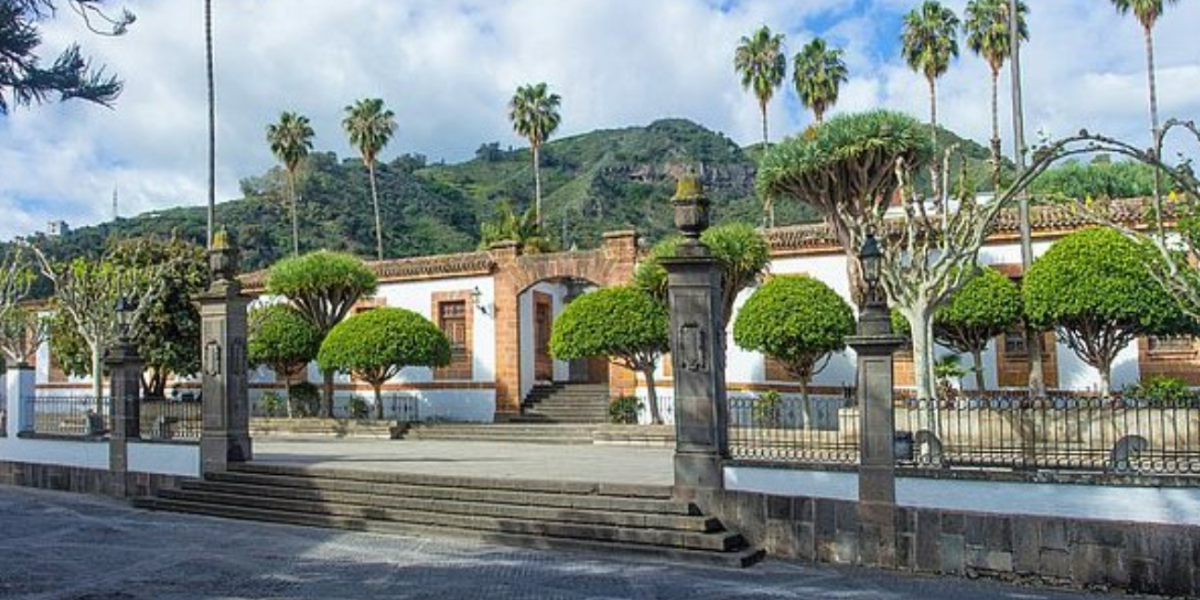
Greener and more traditional, with better value and a slower rhythm. Teror is home to the cheapest houses on the Canary Islands, while Arucas has handsome stone architecture and good links south.
South resorts (Maspalomas, Playa del Inglés, Meloneras)
Sun, dunes and golf on tap. It’s the priciest rental pocket in the archipelago, with San Bartolomé de Tirajana averaging about €21.6 per m² for rent and around €4,719 per m² to buy, reflecting demand near the coast.
Southwest Mogán
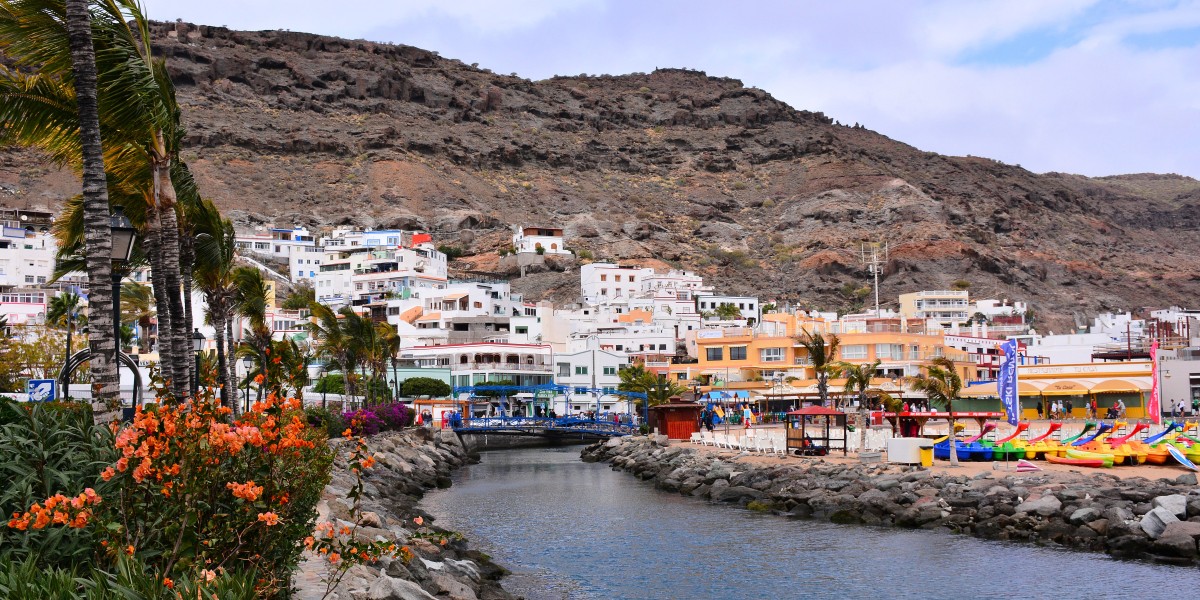
Sheltered weather, low rainfall and postcard marinas. Day-to-day is beachy and relaxed with a working fishing scene in Arguineguín. Buying skews premium, with Mogán around €4,224 per m² in September 2025, but life feels villagey once you’re off the seafront. Calm coves at Amadores and Anfi del Mar, coastal ferries, and fast buses keep you connected to the airport and the capital.
East commuter belt
Practical living close to the airport and motorways, with everyday shops, schools and sports centres on the doorstep. You'll find friendlier prices than on the south coast. Telde’s historic quarters are a short hop from local beaches, while Vecindario brings big‑box shopping at Atlántico and fast access to windsurfing spots. It suits commuters and families who want space, easier parking and year‑round services without resort crowds.
Tenerife: metro north and sunny south
Santa Cruz–La Laguna (city living)
The tram ties Santa Cruz de Tenerife to San Cristóbal de La Laguna, giving you theatres, galleries and cafés. Day‑to‑day is walkable, food shopping’s easy at Mercado de Nuestra Señora de África, and Anaga Rural Park is on the doorstep for after‑work hikes. Climate‑wise, it’s warmer and drier than the greener north coast yet cooler than the southern resorts, with breezes that take the edge off summer.
North coast of Tenerife

Good value in hillside towns, and a strong local feel, even in the main town of Puerto de la Cruz. Expect cooler, greener microclimates than the south, with black‑sand beaches and quick access up to Teide National Park via La Orotava.
Away from Tenerife's busy resorts, day‑to‑day life here is practical thanks to the local bus network, municipal markets and a calmer pace than the southern resorts. Trade‑offs are cloudier winters and traffic at peak hours. As mentioned, nearby Icod de los Vinos is among the cheapest for both buying.
Southern Tenerife
Sunnier, drier and resort‑heavy, with beaches, international schools and healthcare in easy reach. Costa Adeje is the polished end, with coves, upscale apartments and service. Buying in Adeje tracks the upper end at about €4,466 per m², driven by demand.
Los Cristianos is flatter and very walkable. It has a busy ferry port for hops to La Gomera, La Palma and El Hierro, and a well‑established British community. El Médano is breezier and more bohemian, known for kitesurfing at La Tejita and a lived‑in town centre rather than resort complexes.
Lanzarote: volcanic landscapes and whitewashed towns
Arrecife
Practical base with markets, a compact centre and the island’s best bus hub. Arrecife is handy for the airport and day trips to La Geria vineyards, plus an easy waterfront walk around the Charco de San Ginés and art at the Castillo de San José. Day-to-day is straightforward, with supermarkets, schools and a calmer nightlife than the resorts. Plus, rent tends to be lower than on the south coast.

Puerto del Carmen and its surroundings
Long promenade, beaches, and plenty of services, with quieter residential pockets inland. The Avenida de las Playas strings together Playa Grande, Los Pocillos and Matagorda, with cycle paths and a steady run of cafés. Up in Tías, you’ll find a more local feel and better value, while still being 10–15 minutes from the airport.
Fuerteventura: wind, dunes and surf
Corralejo
Laid‑back surf culture, boat hops to Lobos and the dunes nearby. You’ve got the Corralejo Natural Park on your doorstep, reef breaks for surfers, and a compact centre with plenty of cafés and kit hire. It’s sociable, skewing to remote workers and watersports folk, with steady winter trade winds shaping beach days.
Antigua
Sheltered bay, family‑friendly amenities and a central position on the island for commuting. The marina, promenade and nearby golf course add weekend options, and Fuerteventura Airport (FUE) is roughly 10 minutes by car. It’s practical rather than flashy, with apartment complexes and townhouses that suit families and long‑stayers.
La Palma: green, quiet and outdoorsy
Santa Cruz de La Palma
Historic streets and a compact port city feel, with ferries and short flights to Tenerife and Gran Canaria. Life revolves around Calle O’Daly, the seafront balconies and a tidy city beach, with bus links up into the hills. It’s walkable, cultural and low-key, with a calmer rhythm than the big islands.
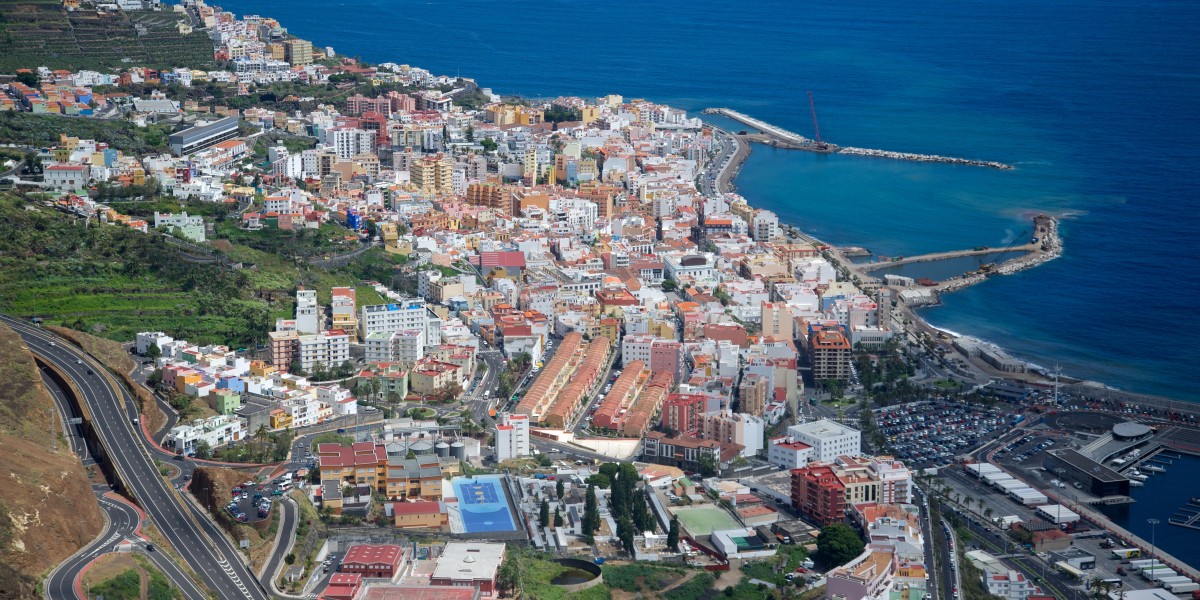
Los Llanos de Aridane/Tazacorte
Sunnier microclimate, easy access to beaches and the trails of Caldera de Taburiente. Puerto de Tazacorte brings a long beach and waterside restaurants, with banana plantations framing the valley. It’s a favourite for hikers and long‑stayers who want warmth, with a car useful for criss‑crossing the island’s steep roads.
La Gomera and El Hierro: small‑island calm
San Sebastián de La Gomera
A mellow capital with ferries to Tenerife, superb walking in Garajonay, and a tight‑knit community. The small town beach, marina and weekly market keep daily life simple, and the island’s ravines mean spectacular drives to villages like Agulo and Valle Gran Rey.
Valverde (El Hierro)
Rural charm, dramatic coastlines and slower days, El Hierro is home to plenty of little-known treasures. The town sits higher up, so it’s cooler than the coast. Swimming spots like La Caleta and the dive mecca of La Restinga are a scenic drive away. Stock and services are limited compared with the larger islands, so a car and a bit of planning go a long way.

Stay in the know about living in Spain as a foreigner—get our weekly newsletter for the latest travel, legal, and lifestyle news.
For a taste of the high life, sign up for the monthly luxury market round-up.
